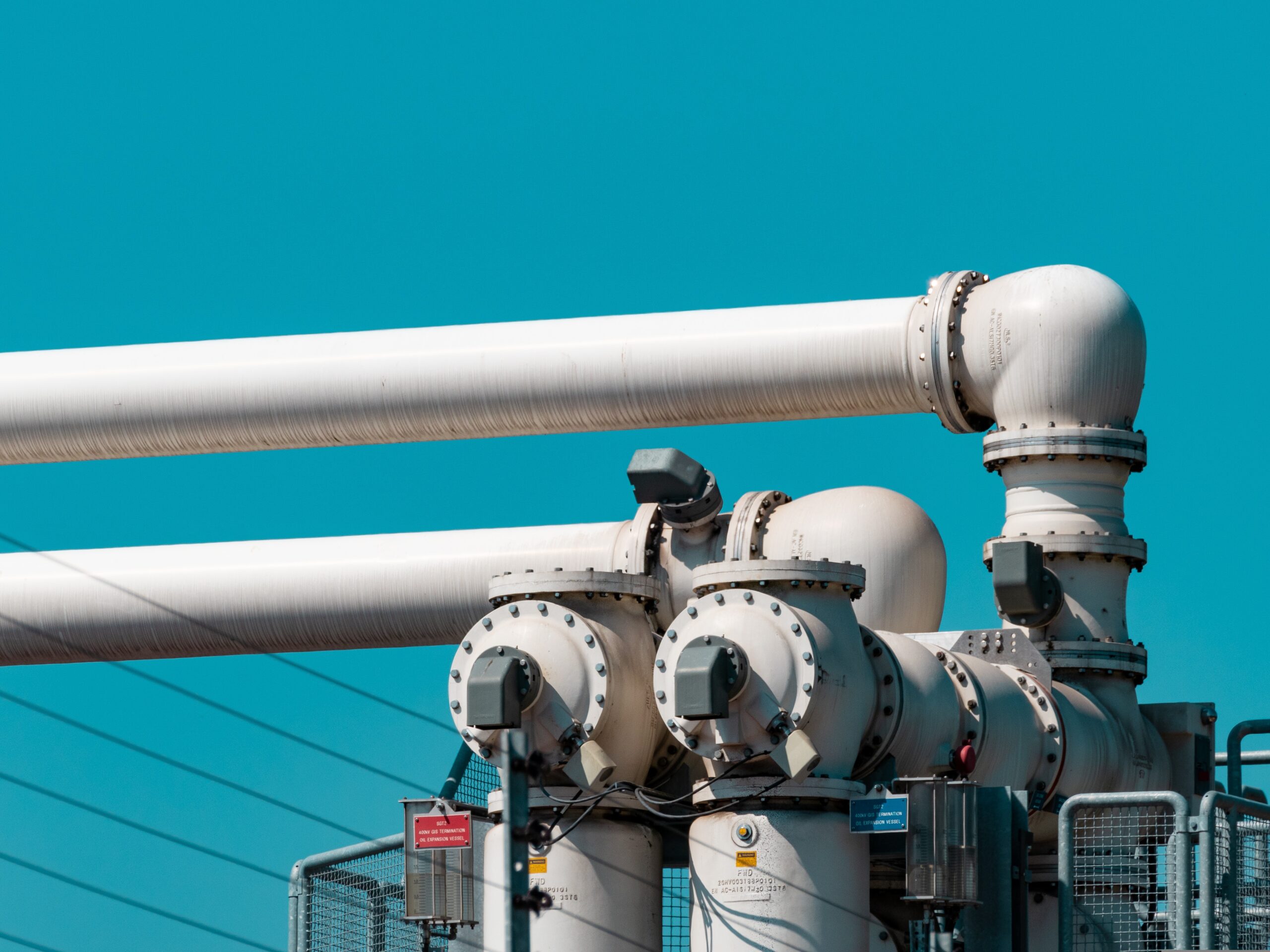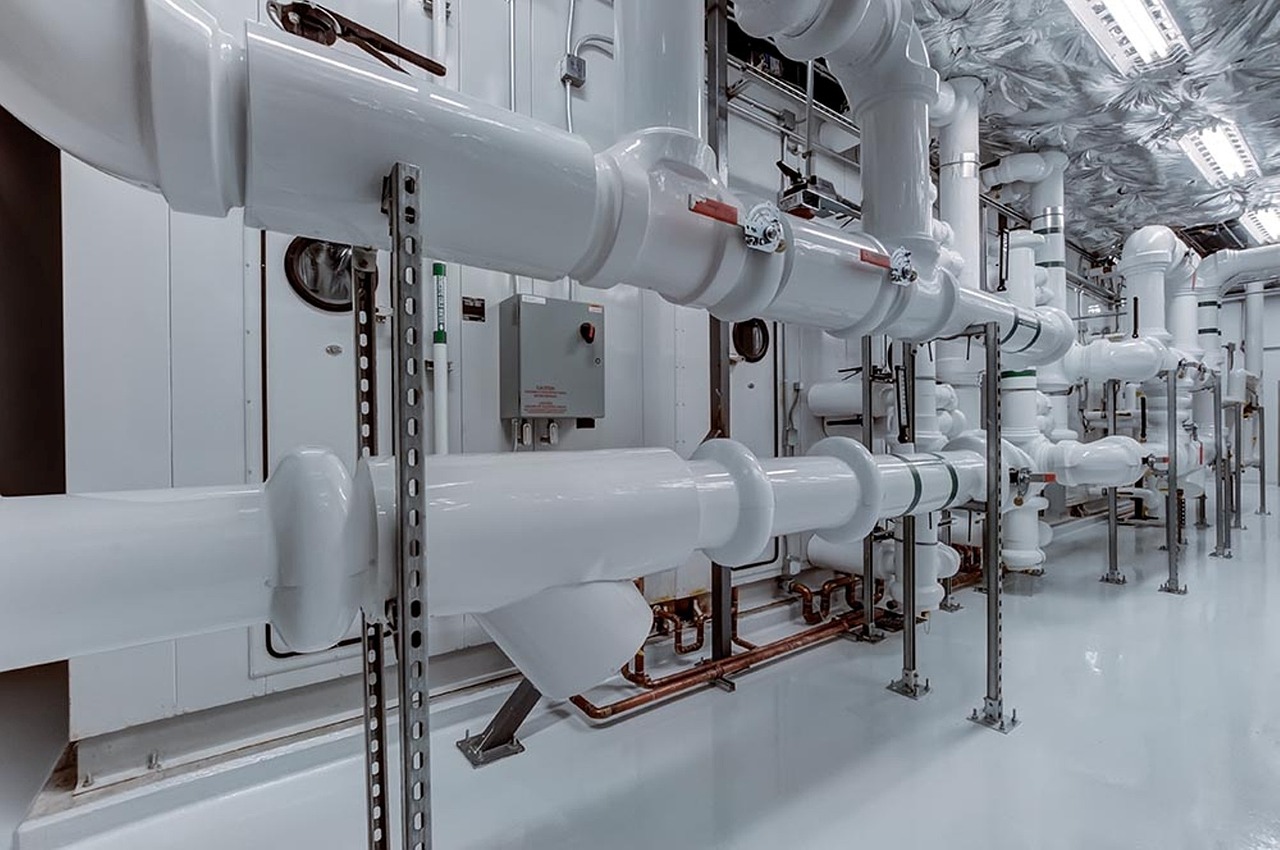Carbon capture, also known as carbon capture and storage (CCS), is a process aimed at removing carbon dioxide (CO2) from the atmosphere It does this by capturing CO2 emissions from industrial and energy-related sources before they reach the ozone layer.
The primary goal of this technology is to reduce greenhouse gas emissions and encourage the use of renewable energy sources, as CO2 is one of the major contributors to the warming of the planet. Carbon capture can also be highly lucrative in other ways, as the resource can be repurposed for oil-harvesting practices.
The carbon capture process can be divided into three main steps: capture, transport, and storage. In the capture stage, CO2 is separated from other gases produced during industrial processes or power generation. Once captured, the CO2 is compressed and transported to a suitable storage site, typically through pipelines.

via Unsplash
Various techniques can be employed for this purpose, including post-combustion capture, pre-combustion capture, and oxyfuel combustion.
The storage phase involves injecting the captured CO2 underground, usually into depleted oil and gas reservoirs, deep saline formations, or unminable coal seams. These geological formations act as natural barriers, preventing the CO2 from escaping back into the atmosphere. Over time, the injected CO2 may undergo chemical reactions with surrounding minerals, forming stable carbonate minerals, which provide a long-term storage solution.
Despite its potential to significantly reduce greenhouse gas emissions and transform the oil and gas industry, carbon capture faces several challenges, such as high costs, technological hurdles, and public concerns over storage sites’ safety and long-term reliability.
Nonetheless, ongoing research and development in the field aim to improve the efficiency and affordability of CCS, making it a more viable option for improving our planet’s environment. Plus, as CCS technologies improve, captured CO2 can be put to increasingly productive uses in oil recovery, fuel manufacturing, and more.
What Is a Carbon Capture Pipeline?
A carbon capture pipeline is an essential component of the carbon capture and storage (CCS) process, responsible for transporting the captured carbon dioxide (CO2) from the point of capture to the storage site.
These pipelines play a crucial role in ensuring the efficient and safe movement of CO2 across vast distances as part of the broader efforts to reduce greenhouse gas emissions and encourage the use of renewable energy sources.
Carbon capture pipelines are designed and constructed with materials that can handle the specific properties of CO2, such as its corrosive nature when combined with water. The captured CO2 is first compressed into a dense, near-liquid state, known as supercritical CO2, to reduce its volume and facilitate transportation.
This supercritical CO2 is then transported through the pipeline system, which typically consists of high-strength steel pipes with protective coatings to prevent corrosion. The routing of carbon capture pipelines is carefully planned to minimize environmental impacts and avoid densely populated areas.
Additionally, pipeline monitoring and safety systems are put in place to prevent leaks and ensure the integrity of the pipeline network. In case of leaks, prompt response measures are implemented to minimize potential risks to public health and the environment.
As the deployment of CCS technology expands, developing an extensive carbon capture pipeline infrastructure will be critical to support the large-scale transportation of CO2 from various emission sources to suitable storage sites. However, the construction and maintenance of such an infrastructure come with financial, regulatory, and public acceptance challenges.
To address these concerns, ongoing research, investment, and collaboration among governments, industries, and communities are needed to create a safe, efficient, and environmentally responsible pipeline network that can help achieve global climate goals and effective repurposing of captured CO2.
How Does a Carbon Capture Pipeline Work?

via Pixabay
A carbon capture pipeline is an integral part of the carbon capture and storage (CCS) process, enabling the efficient transportation of captured carbon dioxide (CO2) from emission sources to designated storage sites. To understand how a carbon capture pipeline works, let’s delve into the key components and stages involved in the transportation process.
Pipeline Construction
Carbon capture pipelines are typically constructed using high-strength steel with corrosion-resistant coatings. This ensures the pipeline’s durability and ability to withstand the potentially corrosive properties of CO2 mixed with water or other impurities. The pipeline’s diameter and wall thickness are carefully selected based on the anticipated CO2 flow rate and pressure.
Pipeline Routing and Installation
The pipeline’s route is meticulously planned to minimize environmental impacts and avoid populated areas. During installation, measures are taken to reduce land disturbance, protect wildlife habitats, and ensure minimal disruption to local communities. Monitoring systems and safety features are also incorporated into the pipeline design.
Compression
After CO2 is captured from industrial or power generation processes, it is compressed to a supercritical state, exhibiting liquid and gas properties. This reduces the CO2 volume, making it easier to transport and minimizing the energy required for pumping.
Transportation
Once the pipeline is operational, the compressed CO2 is pumped through it, typically using centrifugal compressors. The CO2 is transported to its destination at a controlled pressure to maintain its supercritical state.
Monitoring and Maintenance
Continuous monitoring is crucial to ensure the pipeline’s integrity and detect potential leaks. Regular maintenance and inspections are carried out to guarantee safe and efficient operation. Advanced technologies, such as fiber-optic sensors and remote monitoring systems, are employed to track the pipeline’s performance.
Overall, a carbon capture pipeline is a vital link between CO2 capture and storage, enabling this greenhouse gas’s safe and efficient transportation. Its successful operation relies on careful planning, robust construction, and vigilant monitoring to ensure that CO2 is securely transferred from its source to the designated storage sites.
What Is the Purpose of a Carbon Capture Pipeline?
The primary purpose of a carbon capture pipeline is to facilitate the safe and efficient transportation of captured carbon dioxide (CO2) from emission sources, such as power plants and industrial facilities, to designated storage sites.
By doing so, these pipelines serve as a crucial component of the carbon capture and storage (CCS) process, which aims to reduce greenhouse gas emissions and encourage the use of renewable resources.
The transportation of CO2 through pipelines is an essential step in the CCS process for several reasons. Here are just a few of them:
Geographic Separation
CO2 emission sources are often located far from suitable storage sites, such as depleted oil and gas reservoirs or deep saline formations. Carbon capture pipelines connect these distant points, ensuring the captured CO2 can be securely stored.
Centralized Storage
By transporting CO2 to centralized storage sites, pipelines allow for efficient management and monitoring of the stored gas. This helps address concerns about storage capacity, long-term stability, and environmental impact.
Cost-Effectiveness
Transporting large volumes of CO2 through pipelines is generally more cost-effective and energy-efficient than alternative methods, such as truck or ship transport. This contributes to the overall feasibility of CCS as a greenhouse gas reduction strategy.
Scalability
As the adoption of CCS technology grows, carbon capture pipelines can be expanded or interconnected to form larger networks capable of handling increased CO2 volumes. This adaptability is vital in meeting future climate goals and emission reduction targets.
A carbon capture pipeline aims to bridge the gap between CO2 capture and storage, ensuring that the captured greenhouse gas is safely and efficiently transported for long-term sequestration. By doing so, carbon capture pipelines play a vital role in global efforts to reduce greenhouse gas emissions and find new purposes for captured CO2.
What Are the Benefits of a Carbon Capture Pipeline?
A carbon capture pipeline is a critical link in the carbon capture and storage (CCS) process, offering several benefits contributing to the overall effectiveness of greenhouse gas reduction efforts and climate change mitigation. These benefits include some of the following…
Emission Reduction
By enabling the transportation of captured CO2 to suitable storage sites, carbon capture pipelines significantly reduce greenhouse gas emissions from power plants and industrial facilities. This helps slow down global warming and combats climate change. But captured CO2 has a whole host of additional purposes.
Enhanced Oil Recovery
The transported CO2 can be used in enhanced oil recovery (EOR) processes, where it is injected into depleted oil reservoirs to increase the extraction of remaining oil. This not only prolongs the life of oil fields but also provides a market for the captured CO2, which can help offset the costs associated with CCS.
Energy Security
Using carbon capture pipelines combined with CCS technologies allows for the continued utilization of fossil fuels more sustainably. This can contribute to greater energy security while transitioning towards cleaner energy sources.
Job Creation
The construction, operation, and maintenance of carbon capture pipelines generate employment opportunities in various sectors, including engineering, manufacturing, and environmental services. This can have positive economic impacts on local communities and regions.
Climate Goals
By supporting the large-scale deployment of CCS technology, carbon capture pipelines are essential in meeting national and international climate goals and emission reduction targets.
Technological Innovation
The development and implementation of carbon capture pipelines drive research and innovation in materials, monitoring systems, and pipeline design, which can have broader applications in other industries and infrastructure projects.
Are Carbon Capture Pipelines Filled with Liquid or Gas?
Carbon capture pipelines transport carbon dioxide (CO2) in a unique state that exhibits liquid and gas properties, known as the supercritical state. To better understand the nature of CO2 in carbon capture pipelines, it is essential to explore the process that leads to this supercritical state and its implications for pipeline transportation.
Supercritical CO2 has several advantages for pipeline transportation. First off, let’s discuss density. Supercritical CO2 has a density similar to that of a liquid, which enables efficient transportation of large volumes with reduced pipeline sizes and lower energy consumption for pumping.
Viscosity is another benefit of the supercritical state. The viscosity of supercritical CO2 is closer to that of a gas, which allows for easier flow through the pipeline with minimal frictional losses.
Solubility is also an important consideration. In its supercritical state, CO2 has enhanced solubility properties, which can benefit applications such as enhanced oil recovery (EOR).
Final Thoughts
Carbon capture and storage (CCS) is vital for reducing greenhouse gas emissions and mitigating climate change. Carbon capture pipelines are crucial in the CCS process, transporting captured CO2 in a supercritical state from emission sources to storage sites.
These pipelines offer various benefits, including emission reduction, enhanced oil recovery, energy security, job creation, and support for climate goals. The supercritical state of CO2, exhibiting liquid and gas properties, allows for efficient and effective transportation.
Thus, carbon capture pipelines are essential in the global effort to reduce greenhouse gas emissions and promote a healthy environment for years to come.





